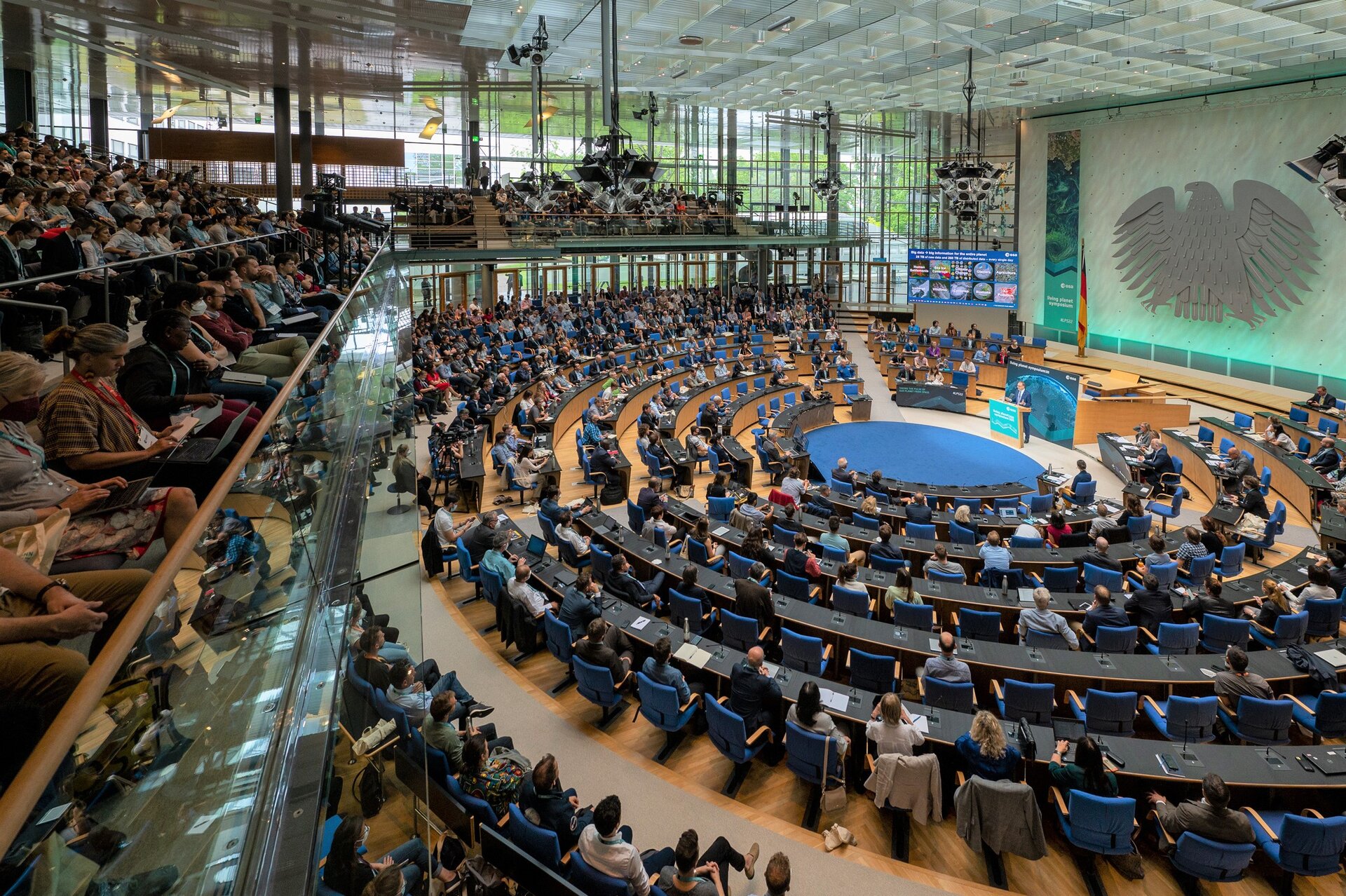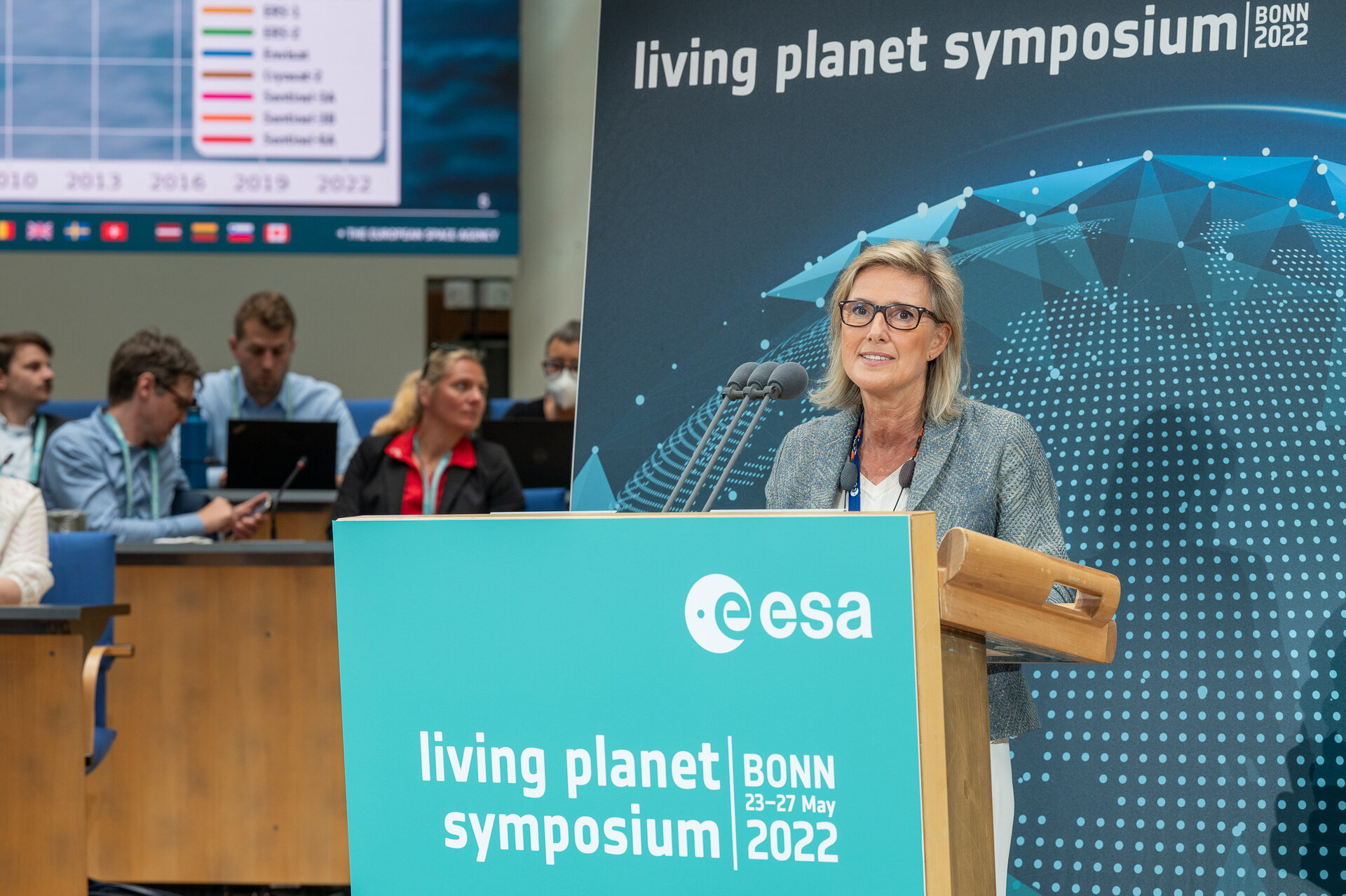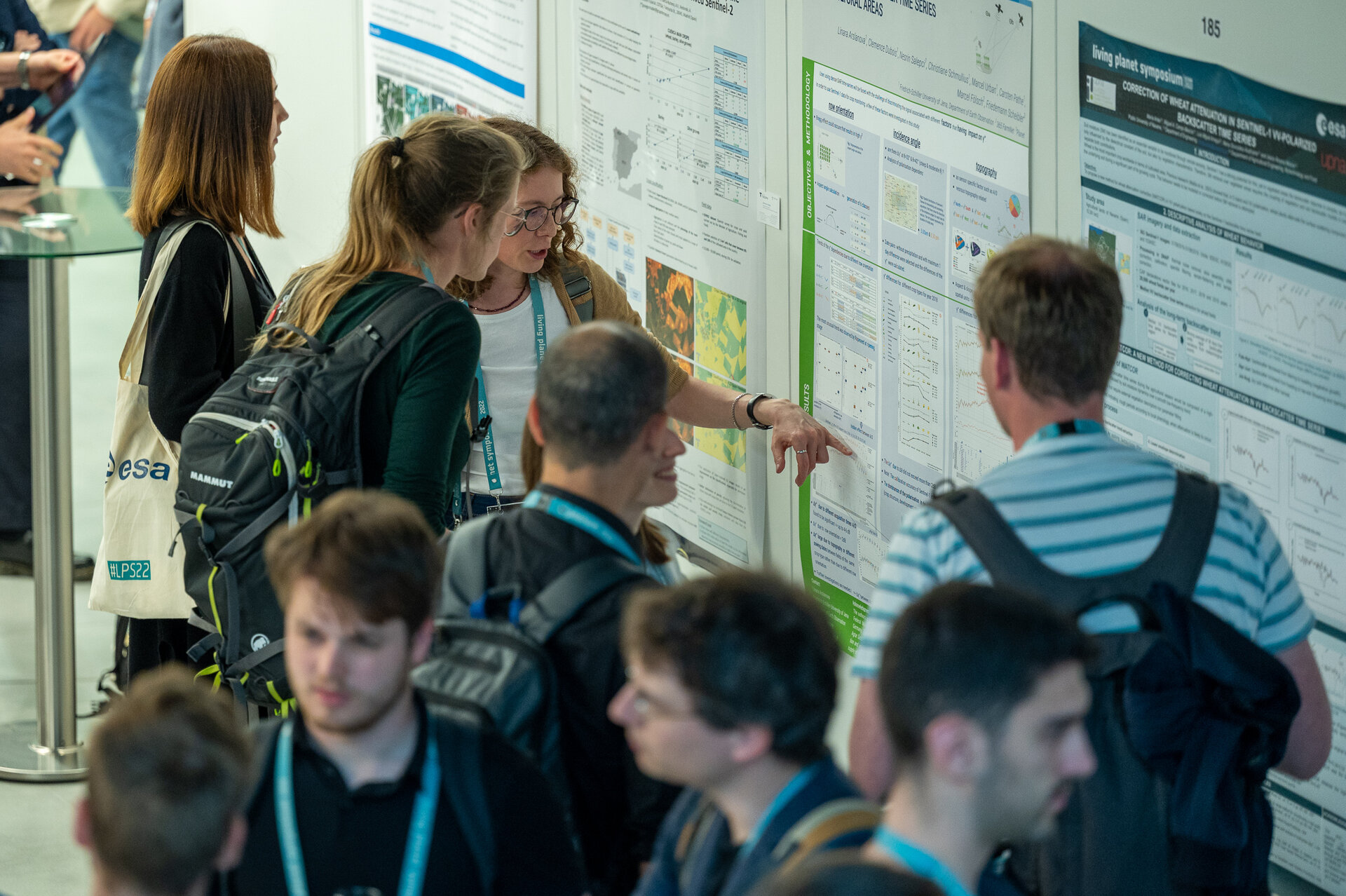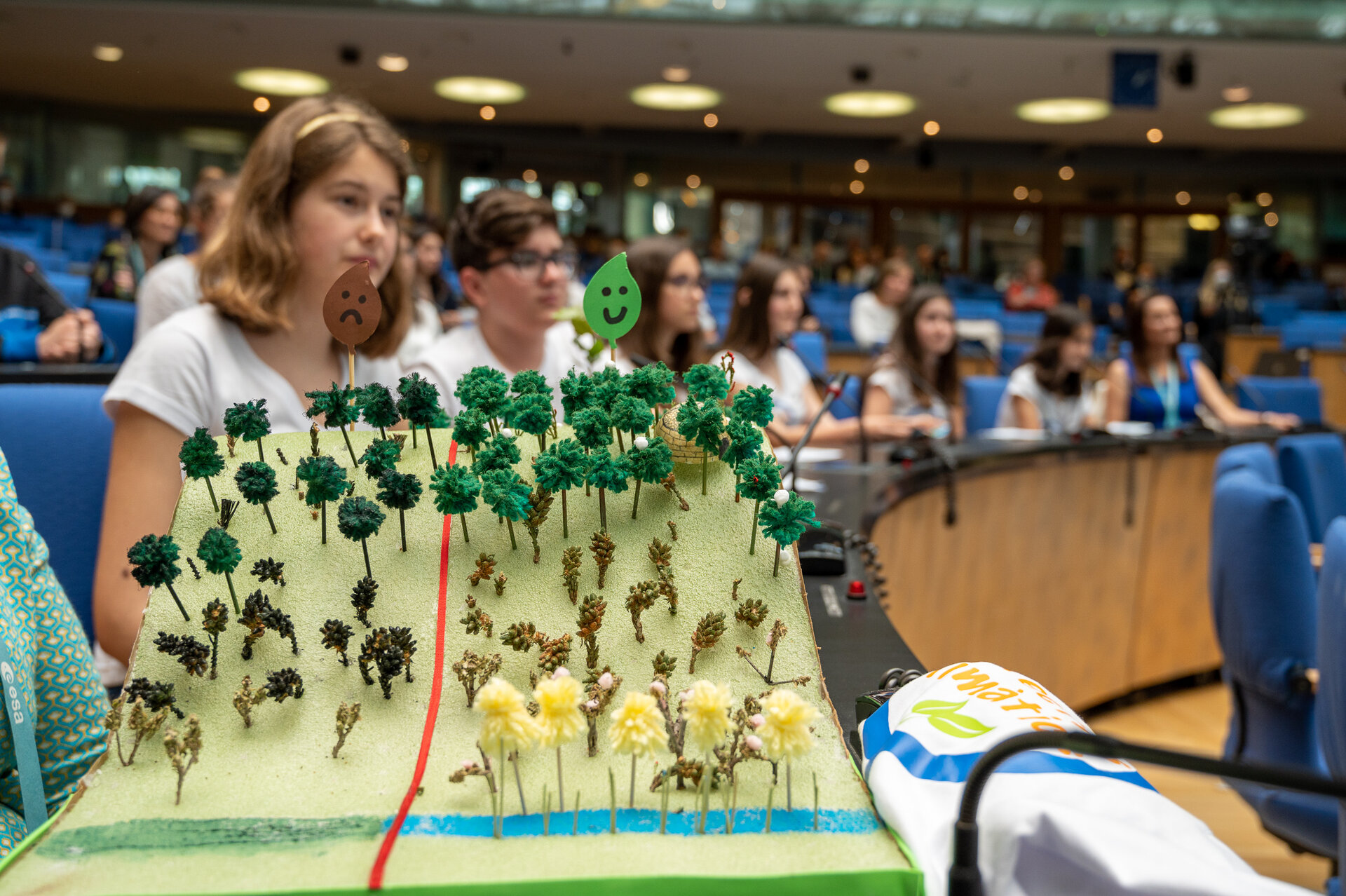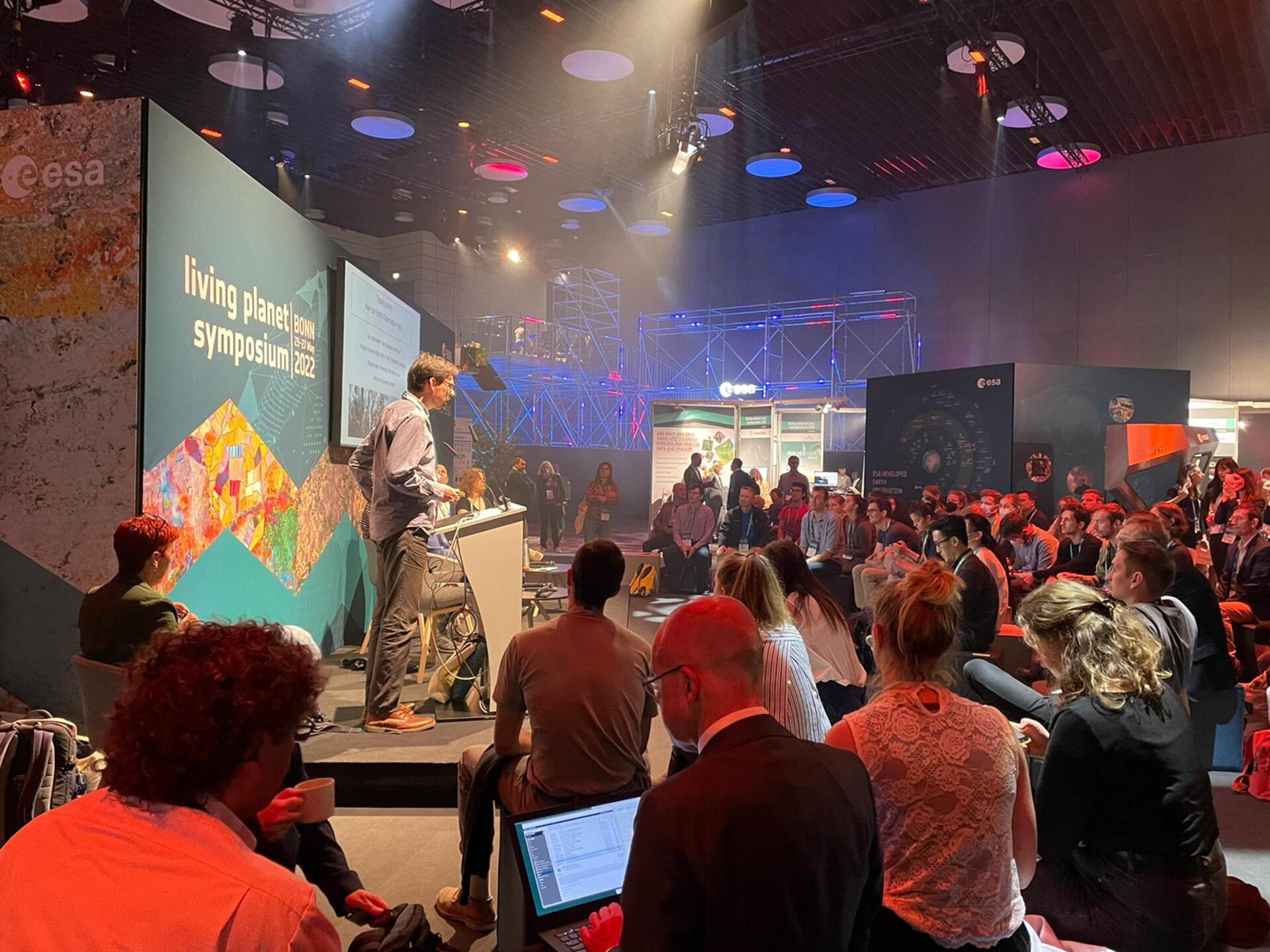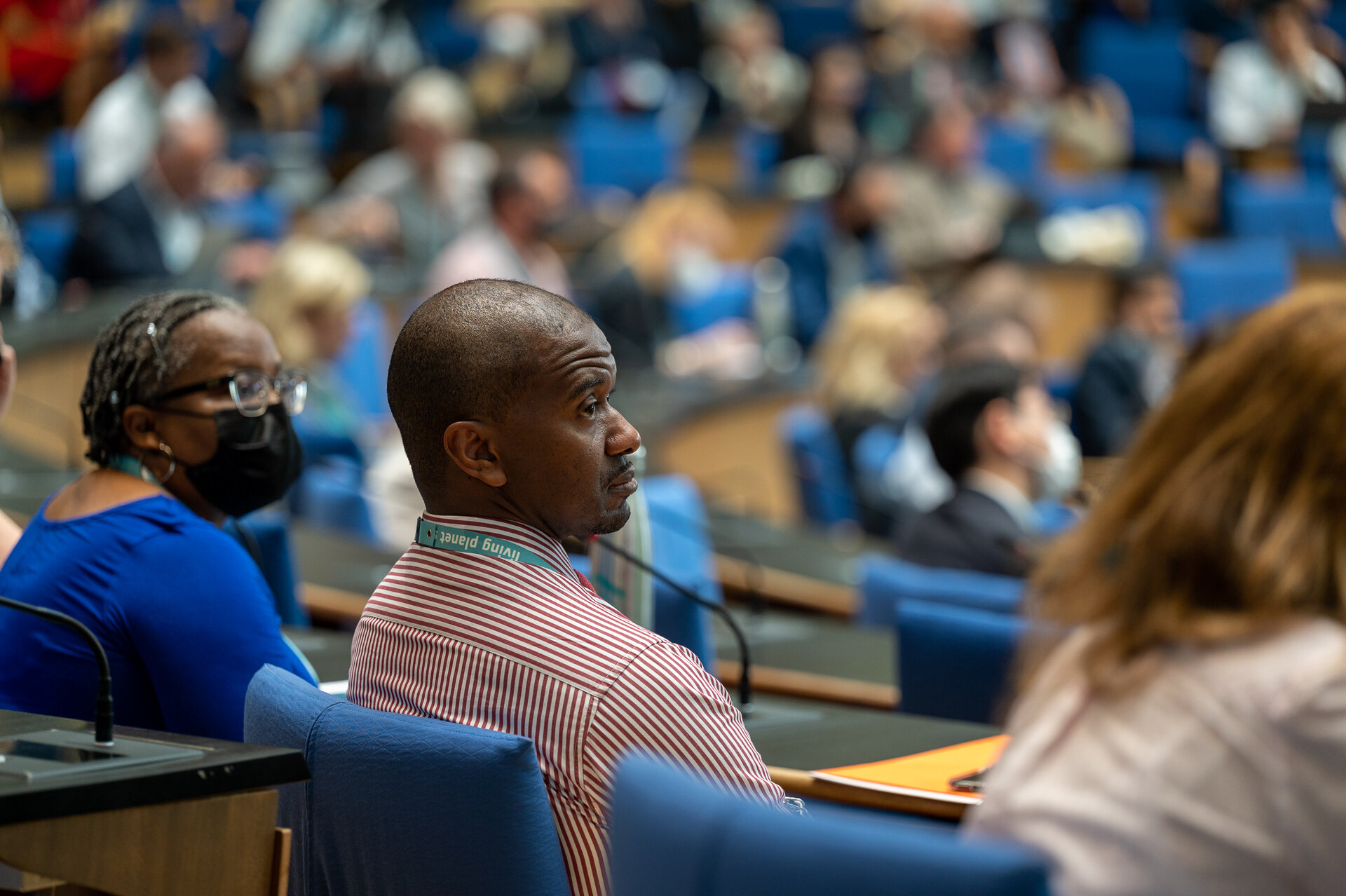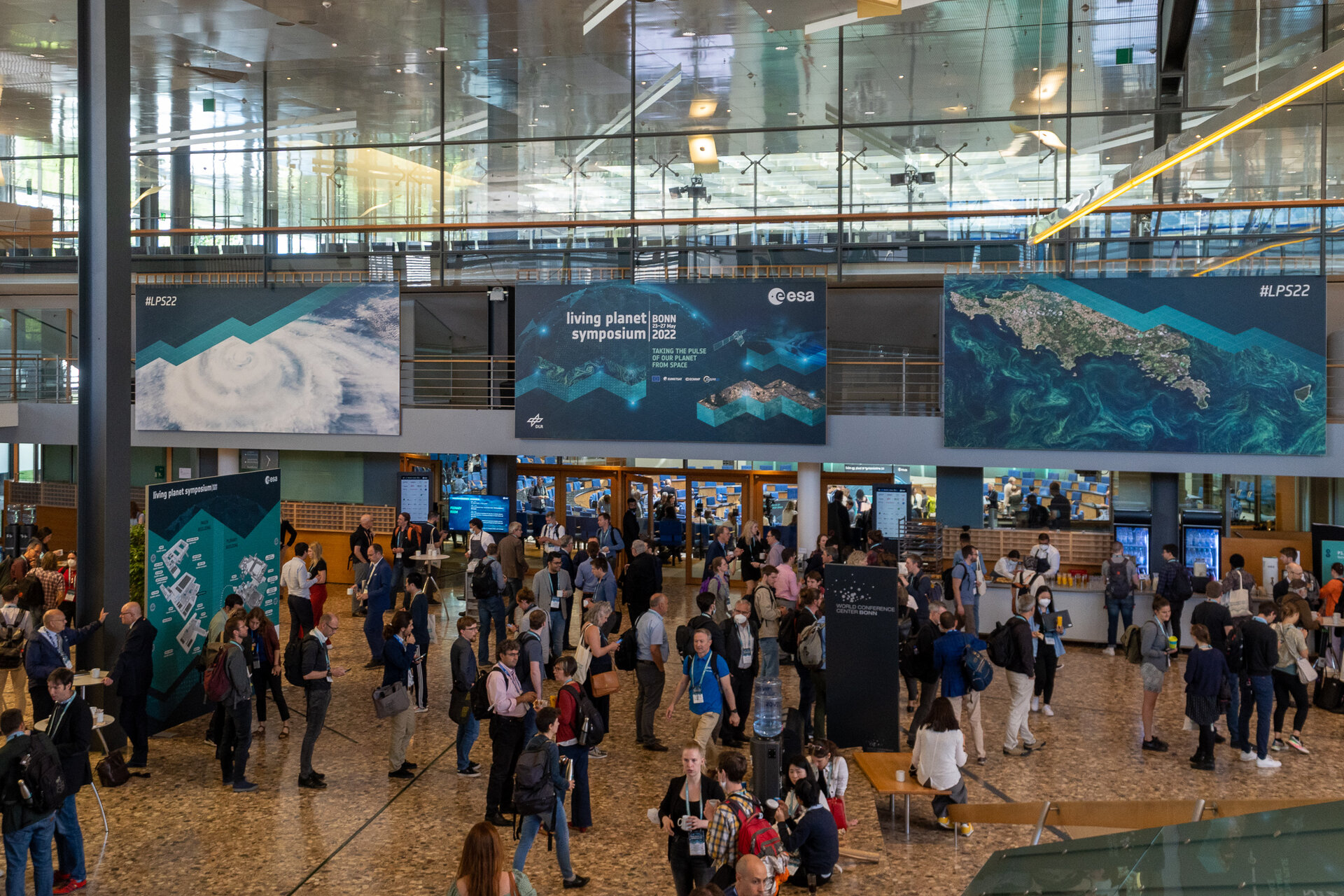Living Planet concludes with record numbers
With more than 5000 participants, 240 science sessions and over 1300 oral presentations, ESA’s Living Planet Symposium comes to a close with record-breaking numbers. Held on 23-27 May at the World Conference Center in the German city of Bonn, the symposium brought together world-class scientists, business leaders, representatives from space agencies and international organisations and industry from around the world. Throughout the week, they showcased the latest advances in Earth observation and highlighted the essential role of Earth observation for decision making regarding the ongoing climate crisis. As the week draws to a close, we look back at some of the highlights of the week.
As we reach a crucial junction in the global response to the climate crisis, monitoring the changes in Earth’s system is more important than ever. European satellites orbiting Earth provide up-to-date information about our changing world, giving essential input to international climate policymakers. Data from satellites fuel many critical applications and research within the Earth observation community.
This extraordinary week proved how Earth observing satellites can take the pulse of our planet from space and help us take action to protect it. The event was organised in partnership with the German Aerospace Agency (DLR) and welcomed local representatives including Katja Dörner the Mayor of Bonn, Anna Christmann, Federal Government Coordinator of the German Aerospace Policy and Ophelia Nick, Parliamentary State Secretary, with the Federal Ministry of Food and Agriculture.

In her closing remarks today, ESA’s Simonetta Cheli, Director of Earth Observation Programmes, said, “The Living Planet Symposium has highlighted the fact that Europe has firmly decided to step up its ambition in space, to reflect its political and economic standing, and to take a leading role in the global space community.
“What has become evidently clear at this year’s symposium is the fact that the European Earth observation space sector fully embraces the digital revolution, tackles urgent societal challenges such as the climate crisis and puts forward ambitious initiatives for the European Green Deal. ESA’s Earth observation package for the upcoming Ministerial Council addresses all of these areas.
“On a personal level, my favourite part was seeing so many enthusiastic people together again at this vibrant event. It brings me great joy to see the very large number of researchers, young professionals and students taking part in this conference. You are the future of Earth observation, and we count on your ideas and passion to ensure a bright future for Earth observation in Europe.”
Selected highlights from the Living Planet Symposium
Europe is proud to have developed the most comprehensive and sophisticated space-based observation infrastructure in the world, including a unique and complementary suit of sensors on board of the Copernicus Sentinel series, ESA’s Earth Explorers, the meteorological missions and various Earth observation satellites planned to be launched by national space agencies and private operators.
The symposium saw high-level discussions on ESA’s Earth observation package ahead of the upcoming Ministerial Council and plans to accelerate the use of space in Europe with the ‘Space for a Green Future Accelerator.’
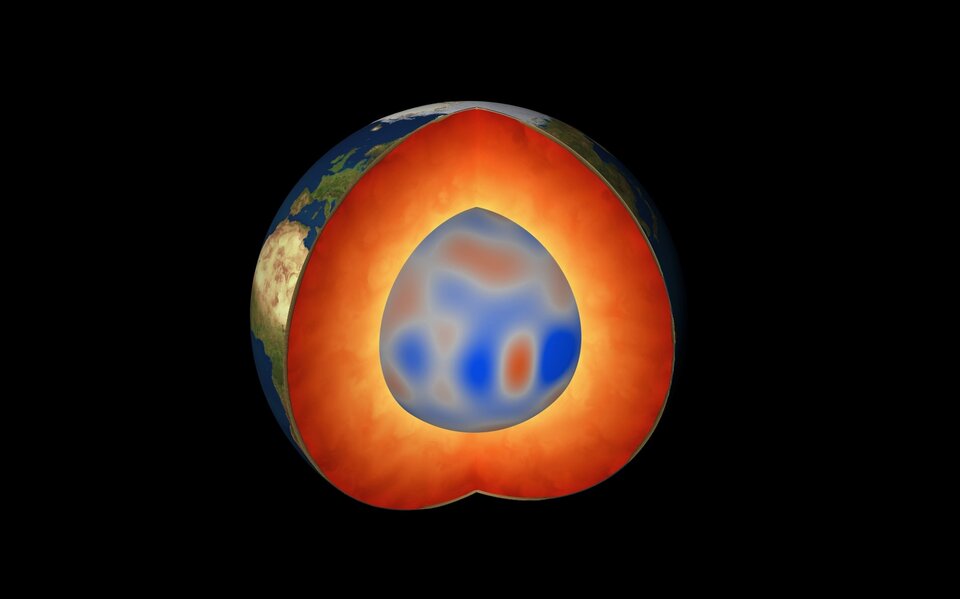
The week saw each the existing Earth Explorers in high demand and the data are greatly utilised in the various sessions this week covering thematic areas from Earth’s core, cryosphere, land and atmosphere. There was an increased focus on the collaboration between different instruments, fields and research groups moving the science approach toward proper system science connecting interconnected systems of systems. Specifically, scientists discovered a completely new type of magnetic wave that has been mapped across the outermost part of Earth’s outer core thanks to ESA’s Swarm mission.
Copernicus received a lot of attention during the week with high-level discussions on the upcoming expansion of the programme. Taking another step forward, ESA authorised the mission’s prime contractor, OHB, to continue the development of the first satellite of the Carbon Dioxide Monitoring Mission (CO2M), one of six Copernicus Sentinel Expansion missions that ESA is developing on behalf of the EU. It also saw progress on the Copernicus Polar Ice and Snow Topography Altimeter mission (CRISTAL) as it successfully passed the Preliminary Design Review meaning the satellite meets all system requirements.
As well as this, data from the Sentinel-3 mission were used to better understand the origin and impact of the first recorded liquid water rainfall event over central Greenland in the late summer of 2021. Additionally, the first continental map of ground motion was generated by the Copernicus Land Monitoring Service based on 5 years of Copernicus Sentinel-1 radar data.
The week also saw GHGSat, a leader in high-resolution greenhouse gas monitoring from space, joining ESA’s Third Party Mission Programme. Data from the company’s fleet of commercial satellites will be provided, free of charge, to researchers working in the fields of Earth science and climate change.
During an exciting session on Wednesday, four candidate missions were discussed as part of ESA’s FutureEO programme. The four mission concepts, Cairt, Nitrosat, Wivern, Seastar, are competing to be the eleventh Earth Explorer. ESA also launched two new science clusters on Water Research and Agriculture Science. These new science clusters are an integral part of the FutureEO Science for Society strategy to foster a community approach to scientific bringing together different teams and projects to work together towards major scientific challenges.
It also saw developments with Open science where the ESA Sentinel Applications Platform, or SNAP, an open-access Earth observation tool dedicated to support scientists to process Copernicus Sentinel and other Earth observation data, reached 1 million downloads.
Living Planet Symposium also showcased European Earth observation efforts in the domain of climate change with a dedicated Climate Day on Wednesday, which presented the main pillars of the new climate initiative Climate-Space. It also saw the launch of the WCRP’s CMIP international office, hosted by the ESA Climate Office, that will take the lead in coordinating scientific and technical planning of the Climate Model Intercomparison Project.
Following the widespread interest and success of the inaugural 2021 ESA-EGU Earth Observation Excellence Award, ESA announced plans for the latest edition of this joint award. ESA and EGU will again recognise and honour an individual early-career scientist and team that have contributed to the innovative use of Earth observation, with a focus on the use of European Earth observation datasets in the field of science and applications.
The symposium also saw the presence of connected national space activities in Earth observation. Other correlated topics discussed throughout the week included Telecommunications and Applications, commercialisation, space debris and space sustainability, while educational activities including the School Labs and an Open Day for families with children took place.
Last but not least, ESA Astronauts Luca Parmitano and Alexander Gerst dropped by to deliver powerful speeches emphasising the critical importance of Earth observation for science and society.
The plenary highlights from ESA’s Living Planet Symposium can be viewed here.


